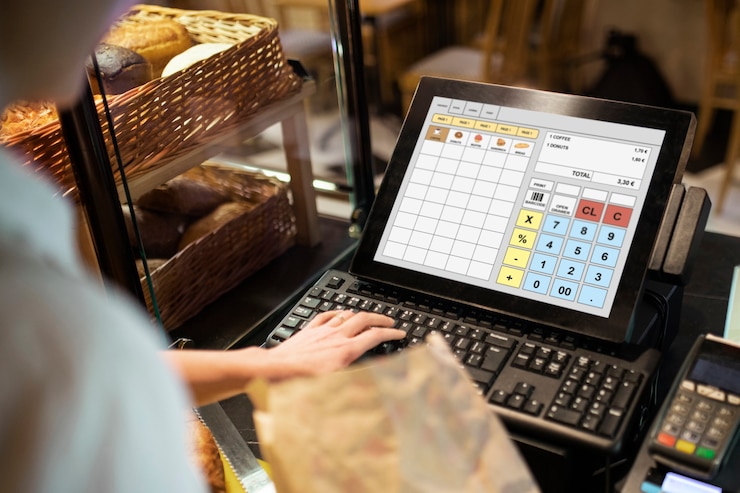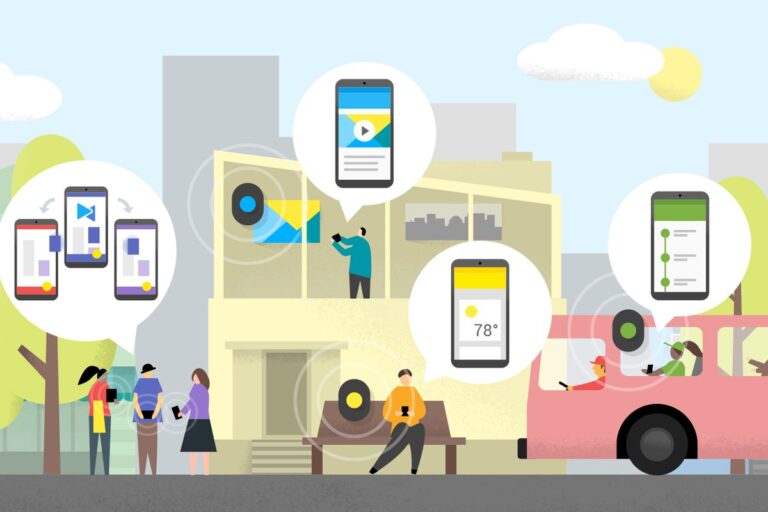The retail environment has become more interconnected than ever in the last decade. A modern point-of-sale system is the linchpin of a seamless omnichannel experience. Fintech experts recognize it as a “connected hub” linking stores, e-commerce, inventory, and customer data.
With roughly 75% of consumers now demanding a unified omnichannel journey (McKinsey, 2023), today’s retailers need a POS that integrates across every channel, whether physical or digital. Keep reading as we break down the key components of an ideal omnichannel retail POS that enable unified operations and exceptional customer journeys for modern retailers.
What Makes a POS “Omnichannel”?
Traditional POS systems focused primarily on transactions at a single store. An omnichannel retail POS, however, is fundamentally different. It breaks down the walls between offline brick-and-mortar stores, e-commerce websites, mobile apps, and other customer touchpoints. But what makes it so indispensable for a retailer’s integrated technology ecosystem?
As McKinsey reported in 2022, today’s shoppers commonly juggle channels: about 60-70% research in one channel and buy in another. Omnichannel customers are also high-value, spending roughly 1.5x more than single-channel shoppers (Deloitte, 2025), so giving them a consistent experience is imperative.
For instance, with an omnichannel POS, store associates can access online inventory levels or fulfill an e-commerce order from the register. Availability, pricing, and customer data stay in sync across all channels.
The Core Components of a Powerful Omnichannel Retail POS
A cutting-edge omnichannel retail POS is built upon a foundation of various integrated components working in harmony:
- Unified Transaction Processing:
All sales, returns, exchanges, layaways, regardless of the original purchase channel (in-store, online, or mobile), feed into one platform. It provides one source of truth for products, prices, and customers across channels. - Integrated Payment Processing:
The POS handles every payment type (cards, mobile wallets, gift cards) and connects with trusted, secure payment processors, ensuring customers can pay however they choose without data gaps. - Real-Time Inventory Management:
With a system that provides real-time omnichannel inventory visibility, retail staff can know exactly what stock is available across all stores, warehouses, and distribution centers. A modern POS solution can link to an omnichannel inventory management software to show live stock availability, preventing overselling. - CRM (Customer Relationship Management) Integration:
Every sale updates the central customer database or loyalty system. Associates can look up purchase history and apply rewards or offers at checkout to deliver a hyper personalized shopping experience for new and returning shoppers alike. - Promotion and Loyalty Management:
An integrated promotion engine lets retailers define discounts, coupons, and loyalty rewards centrally. The POS’s ability to enforce these offers during checkout (in-store or online) is key to engaging customers and driving repeat business. - OMS (Order Management System) Integration:
Integration with an OMS alongside omnichannel inventory data enables executing omnichannel fulfillment services such as BOPIS (Buy Online, Pick Up In-Store) and ship-from-store. Plus, it makes cross-channel returns hassle-free: a shopper can easily return an online purchase in store using the same transaction data. - E-Commerce Synchronization:
Product catalogs, pricing, and promotions are all synchronized between the POS and e-commerce sites. It means any changes, whether new items, markdowns, or sales, can be simultaneously updated everywhere. - Mobile and Flexible Deployment:
A modern omnichannel retail POS operates outside of a fixed counter. It enables retail store employees to assist customers and complete transactions anywhere via tablets and mobile devices. Some can run offline when connectivity is lost and sync data later. - Reporting and Analytics:
Connecting to reporting tools allows retailers to consolidate data from all touchpoints (including analytics from omnichannel inventory management software) and utilize it to gain a holistic view of sales trends, inventory movement, and customer behavior.
With all the pieces tied together, retailers can ensure that inventory, pricing, and customer information are consistent throughout, precisely what today’s shoppers demand!
Get a Demo of Veras Omniview | Omnichannel Inventory Management Software.
Discover Veras Retail’s Omnichannel POS Ecosystem
Building a robust omnichannel retail POS requires a platform designed for connectivity, and Veras Retail offers exactly that. Our POS suite provides the following capabilities out of the box:
- Veras CheckOut is our powerful, omnichannel-native core POS solution. It delivers offline reliability, unified inventory and pricing across channels, and a complete register interface with promotion capabilities.
- Veras Extend provides in-store clienteling, product lookup, price checks, endless aisle ordering, and mobile transactions, all through an intuitive tablet/mobile app for store workers.
- Veras Affinity brings integrated CRM and AI-powered clienteling, giving frontline associates real-time customer insights and product recommendations based on loyalty and purchase history.
- Veras Activate is a centralized promotions and coupons engine. Activate lets retailers define discounts, BOGOs, flash sales, and personalized coupons that apply at the POS or online.
Together, they enable seamless transactions, inventory visibility, tailored customer experiences, and promotion management across every touchpoint. In practice, a retail company running the Veras suite has a single, unified commerce platform powering its omnichannel strategy!
FAQs
1. What are the crucial factors to consider when choosing the right omnichannel POS solution for my retail business?
Prioritize integration with your existing retail management systems, and look for scalability to handle growth. Ensure it provides a real-time view of your omnichannel inventory. Core capabilities should include essential features like BOPIS, ship-from-store, mobile checkout, and unified promotions. Finding a solution that offers these integrated components is key to omnichannel success, and Veras Retail provides a comprehensive suite designed for these needs!
2. How does Veras Retail’s API-first approach benefit omnichannel point-of-sale?
Our API-first design ensures that the omnichannel retail POS can easily and securely integrate with various retail systems, such as CRM, ERP, e-commerce platforms, and omnichannel inventory management software. This enables seamless data flow and greater customizability in building a tech stack tailored to your store’s processes.
3. Should an omnichannel retail POS be cloud-based or on-premise?
A cloud-based omnichannel POS offers greater flexibility, scalability, easier updates, and better real-time data synchronization needed for managing global inventory across locations. Plus, leading solutions cache transaction data locally when connectivity is lost. So once the network is restored, all sales and updates are auto-synced with central systems!
4. How do I measure ROI after deploying an omnichannel POS?
Track metrics such as average transaction value, checkout time reduction, inventory accuracy improvements, BOPS adoption rates, and loyalty program enrollments. Compare these figures before and after implementation to quantify time savings, increased sales, and reduced stockouts.




